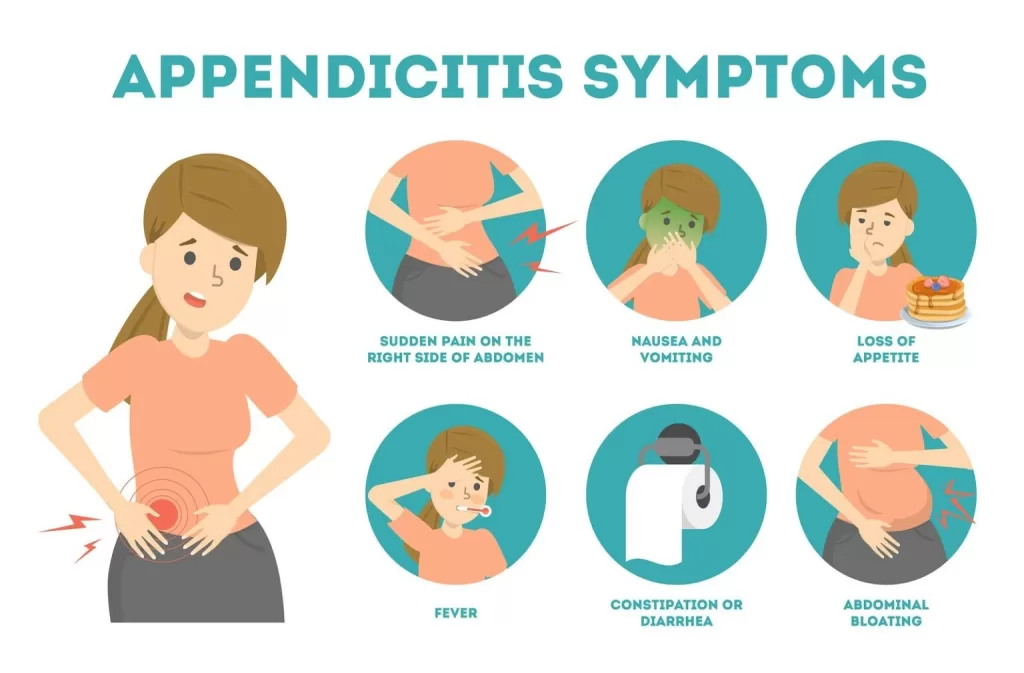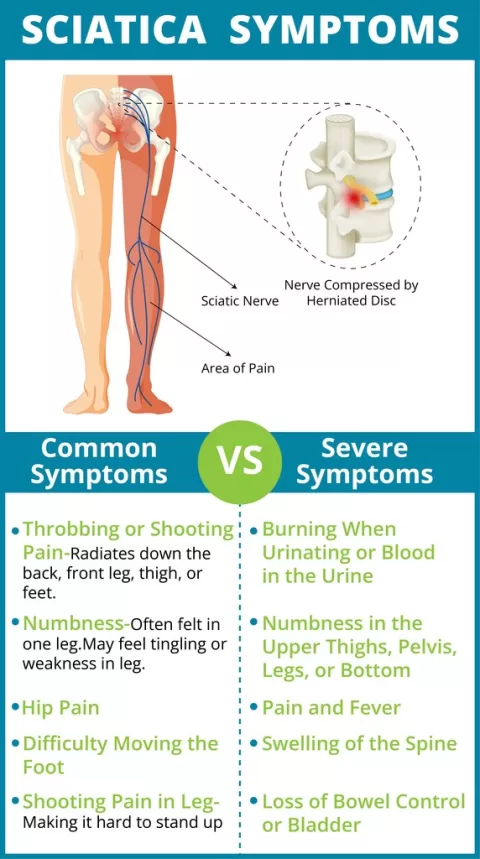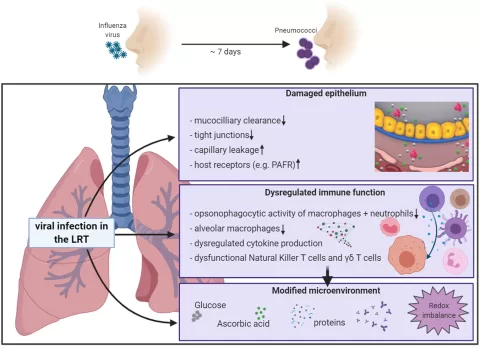Appendicitis is a common medical condition characterized by the inflammation of the appendix, a small pouch attached to the large intestine. This condition often manifests through various appendicitis symptoms, including intense abdominal pain that typically starts near the belly button and shifts to the lower right abdomen. Recognizing these symptoms early is crucial, as timely appendicitis treatment can prevent severe complications like perforation or peritonitis. Particularly concerning is appendicitis in children, where symptoms may not be as pronounced, making diagnosis more challenging. Understanding appendicitis recovery is essential, as most patients can expect a quick return to normal activities following treatment.
Often referred to as inflammation of the appendix, appendicitis can strike individuals from infancy to adulthood. This condition, marked by severe abdominal discomfort and other alarming signs, necessitates immediate medical evaluation and intervention. Individuals experiencing appendicitis symptoms such as nausea and fever should not delay seeking help, as swift treatment is vital in preventing complications. In younger patients, particularly children, the presentation of appendicitis can be less straightforward, making awareness of the varied symptoms critical for parents and caregivers. Overall, understanding the implications of this condition, including its treatment and recovery pathways, is essential for effective management.
The Importance of Early Diagnosis in Appendicitis
Early diagnosis of appendicitis is critical to prevent potentially life-threatening complications. When appendicitis symptoms are recognized promptly, such as acute abdominal pain, nausea, or fever, it allows for immediate medical evaluation and intervention. Delaying treatment can lead to the appendix rupturing, which can cause peritonitis, a severe infection of the abdominal cavity that requires more extensive treatment and longer recovery times. Therefore, awareness of the early signs and symptoms of appendicitis is essential for individuals and families.
In particular, individuals should be vigilant about changes in their health, especially when experiencing abdominal discomfort that transitions from a vague pain near the belly button to sharp pain in the lower right abdomen. Understanding the urgency of these symptoms can facilitate quicker access to medical care, ultimately improving outcomes and reducing the likelihood of complications associated with untreated appendicitis.
Appendicitis Symptoms: Recognizing the Warning Signs
Recognizing the symptoms of appendicitis is crucial for timely treatment. The classic presentation includes a gradual onset of abdominal pain that begins near the belly button and eventually localizes to the lower right quadrant. Accompanying symptoms such as nausea, vomiting, and loss of appetite may also be present. Individuals should pay attention to any shifts in pain intensity and location, as this can signal the need for immediate medical evaluation.
In children, the symptoms of appendicitis can be less specific, making diagnosis more challenging. Parents should be aware of signs like irritability, refusal to eat, and vague complaints of stomach pain. Given the differences in symptom presentation between adults and children, a thorough clinical assessment is essential to ensure that appendicitis is correctly diagnosed and treated promptly.
Understanding Appendicitis Treatment Options
The primary treatment for appendicitis is surgical intervention, commonly performed as an appendectomy. This procedure can be carried out using two main techniques: laparoscopic and open appendectomy. Laparoscopic appendectomy is preferred for its minimally invasive nature, resulting in less postoperative pain, shorter hospital stays, and quicker recovery for patients. In contrast, open appendectomy may be necessary in cases where the appendix has ruptured or other complications arise.
Post-surgery, most patients are able to return home within one to two days, although recovery can vary based on the surgical method and individual health factors. Following surgical treatment, it is important for patients to follow their doctor’s recovery guidelines to ensure a smooth healing process and to recognize any signs of complications that may arise.
Appendicitis Recovery: What to Expect After Surgery
Recovery from appendicitis surgery generally involves a few days in the hospital, followed by several weeks at home. Patients can typically resume normal activities within one to three weeks, depending on their overall health and the type of surgery performed. It’s important for individuals to listen to their bodies and not rush back into strenuous activities, as this could lead to complications or prolong the recovery period.
During the recovery phase, patients should monitor their surgical site for any signs of infection, such as increased redness, swelling, or discharge. Additionally, maintaining a healthy diet and staying hydrated can aid in recovery. Regular follow-up appointments with healthcare providers are essential to ensure that the healing process is progressing appropriately.
Special Considerations for Appendicitis in Children
Appendicitis in children poses unique challenges, as their symptoms may not always align with the classic presentation seen in adults. Children may exhibit non-specific symptoms such as irritability, changes in appetite, or generalized abdominal pain. This vagueness can complicate diagnosis, making it imperative for parents and caregivers to seek medical attention if they suspect their child is experiencing appendicitis.
Healthcare providers must be vigilant when diagnosing appendicitis in pediatric patients, as misdiagnosis can lead to severe complications. Utilizing imaging studies, such as ultrasound or CT scans, can help confirm the diagnosis and ensure that children receive the appropriate treatment in a timely manner. Early intervention is key to a successful recovery from appendicitis in children.
Frequently Asked Questions
What are the common symptoms of appendicitis?
Common symptoms of appendicitis include sudden abdominal pain that begins around the belly button and moves to the lower right abdomen, nausea, vomiting, loss of appetite, and fever. Recognizing these appendicitis symptoms early is vital for timely treatment.
What is the standard treatment for appendicitis?
The standard treatment for appendicitis is an appendectomy, which can be performed using either laparoscopic or open surgical methods. Laparoscopic appendectomy is less invasive and offers quicker recovery, while open appendectomy may be necessary for complicated cases.
How long does recovery take after an appendicitis surgery?
Recovery time after appendicitis surgery varies; most patients stay in the hospital for 1-2 days and may take one to several weeks to fully recover at home. Factors such as the surgical method and individual health greatly influence recovery duration.
Can appendicitis occur in children, and how are their symptoms different?
Yes, appendicitis can occur in children. Symptoms may be less specific, often presenting as irritability, fever, or generalized abdominal pain rather than localized pain. This can make diagnosing appendicitis in children more challenging.
What complications can arise from untreated appendicitis?
If appendicitis is left untreated, it can lead to serious complications such as perforation of the appendix, resulting in peritonitis, an infection of the abdominal cavity. Prompt treatment is crucial to avoid these severe outcomes.
| Key Point | Details |
|---|---|
| What is Appendicitis? | Inflammation of the appendix due to blockage, leading to pain and potential infection. |
| Common Symptoms | Abdominal pain (shifting from belly button to lower right), nausea, vomiting, loss of appetite, and fever. |
| Diagnosis in Children | Symptoms can be less specific; irritability and vague pain are common. |
| Treatment Methods | Laparoscopic appendectomy (minimally invasive) and open appendectomy (for complications). |
| Recovery Process | Hospital stay of 1-2 days and home recovery lasting several weeks, depending on individual factors. |
| Complications | Delayed treatment can lead to perforation or abscess formation. |
| Healthcare Coverage | Private health plans cover approximately 84% of emergency appendicitis bills. |
Summary
Appendicitis is a serious medical condition that requires immediate attention when symptoms arise. Understanding its symptoms—including abdominal pain, nausea, and fever—is vital for prompt diagnosis and treatment. The primary course of action is typically an appendectomy, which can be performed laparoscopically or through an open procedure, depending on the severity of the condition. Recovery times vary, but awareness of potential complications underscores the need for timely medical intervention. Additionally, understanding the implications of healthcare coverage for appendicitis can ease the financial burden on affected families. For anyone experiencing signs of appendicitis, seeking medical advice is critical to ensure the best possible outcomes.
The content provided on this blog (e.g., symptom descriptions, health tips, or general advice) is for informational purposes only and is not a substitute for professional medical advice, diagnosis, or treatment. Always seek the guidance of your physician or other qualified healthcare provider with any questions you may have regarding a medical condition. Never disregard professional medical advice or delay seeking it because of something you have read on this website. If you believe you may have a medical emergency, call your doctor or emergency services immediately. Reliance on any information provided by this blog is solely at your own risk.







